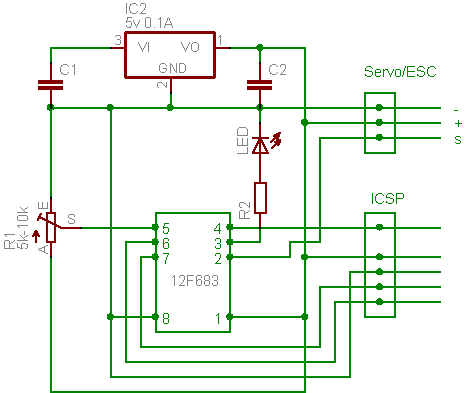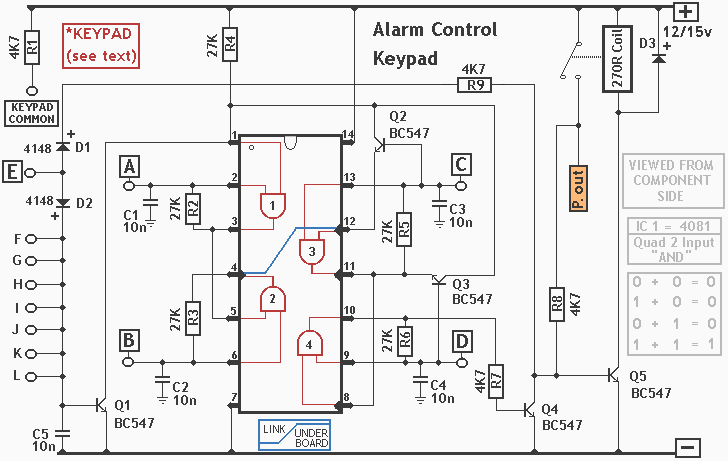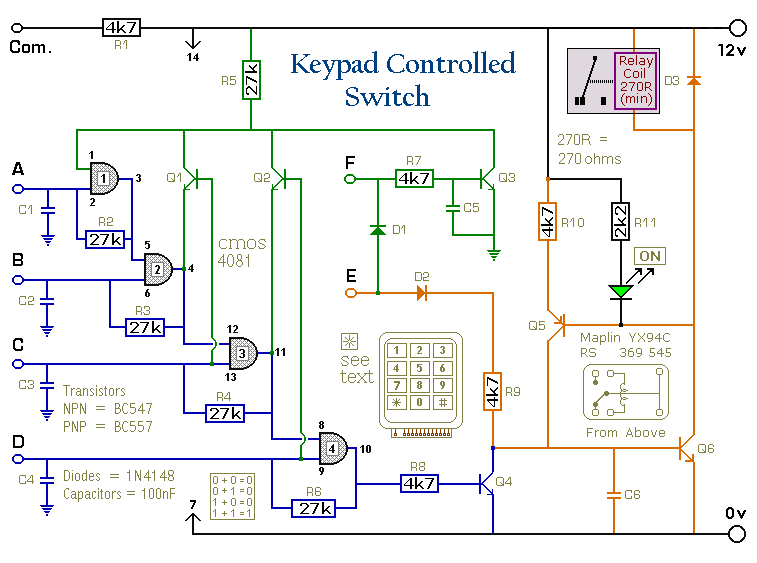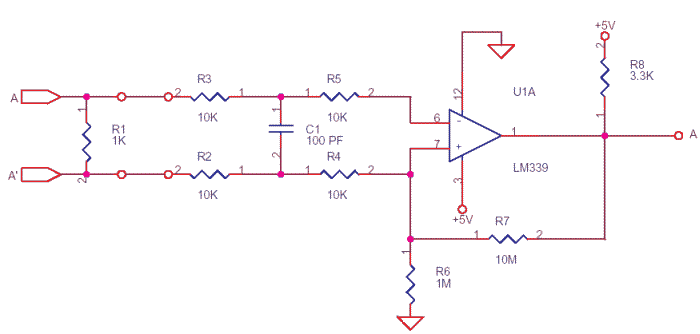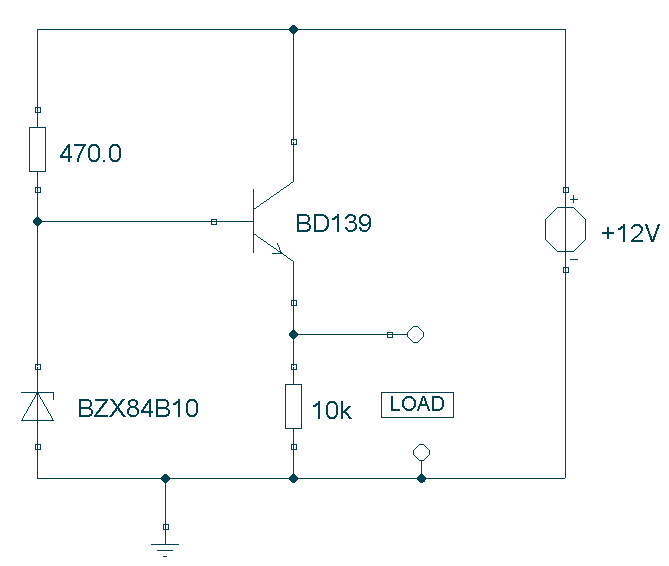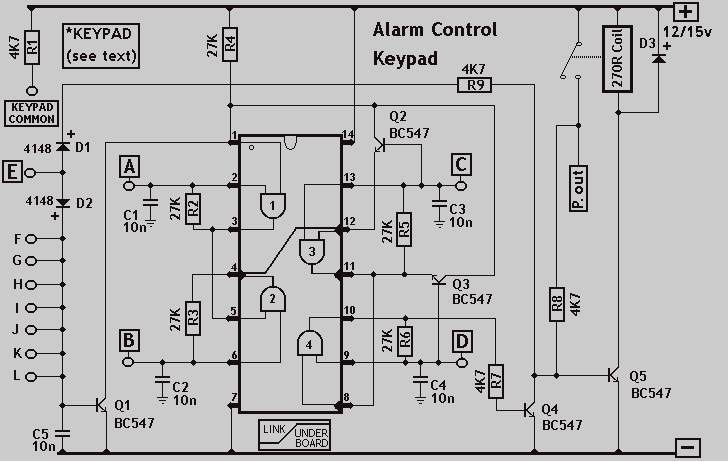
Decimal to BCD Convertor Keypad
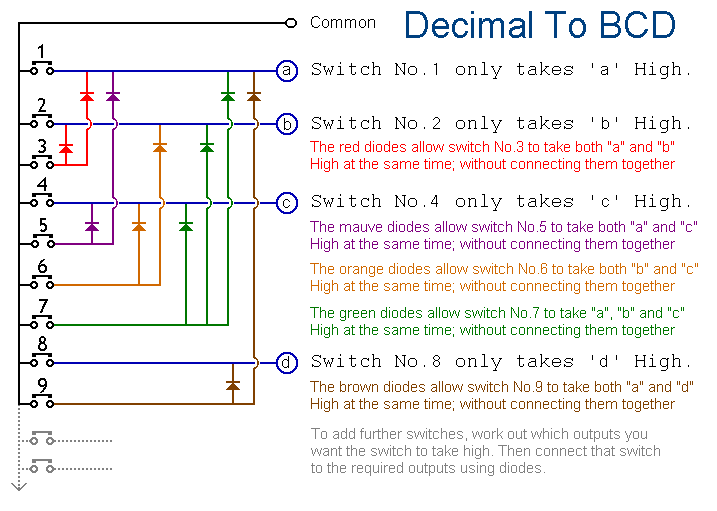
When any particular key is pressed, its value will appear in BCD form at the outputs (A, B, C & D). It will remain there until another key is pressed. The 12 keys produce outputs up to "1011". Extended to 16 keys, the circuit will give the full HEX to BCD conversion. The above circuit produces an output ONLY while the input switch is depressed. To make a convertor with a latched output, the following modifications are made. Each CMOS AND gate has its free input tied to Vcc, and by the action of R1 through
The described circuit functions as a binary-coded decimal (BCD) converter, which translates the pressed key value into a BCD output format. The outputs A, B, C, and D represent the four bits of the BCD code, allowing for the representation of decimal digits 0 through 9. When one of the 12 keys is pressed, the corresponding BCD value is generated and held at the outputs until a different key is pressed, which then updates the displayed value.
For applications requiring an extended range, the circuit can accommodate up to 16 keys, yielding a full hexadecimal to BCD conversion. This enhancement enables the representation of values from 0 to 15 in hexadecimal format, which corresponds to 0000 to 1111 in binary.
The initial design outputs a signal only while the key is actively pressed, which may not be suitable for all applications. To create a latching output that maintains the last pressed key's value even after the key is released, modifications are necessary. Each CMOS AND gate in the circuit is configured with its free input connected to the positive supply voltage (Vcc). This configuration allows the circuit to maintain the last output state by leveraging the characteristics of the CMOS technology, which consumes minimal power and provides high noise immunity.
Additionally, a resistor (R1) is introduced in the circuit to help manage the timing and stability of the latching mechanism. This resistor can influence the charging and discharging rates of any capacitive elements present in the circuit, thereby affecting the response time and the overall performance of the latch. The precise values of R1 and any other components will depend on the specific requirements of the application, such as the desired response time and the load characteristics of the output.
Overall, this circuit design provides a robust solution for converting key presses into a stable BCD output, with the flexibility to extend its functionality through the incorporation of additional keys and latching mechanisms.When any particular key is pressed, its value will appear in BCD form at the outputs (A, B, C & D). It will remain there until another key is pressed. The 12 keys produce outputs up to "1011". Extended to 16 keys, the circuit will give the full HEX to BCD conversion. The above circuit produces an output ONLY while the input switch is depressed. To make a convertor with a latched output, the following modifications are made. Each CMOS `AND` gate has its free input tied to Vcc, and by the action of R1 through 🔗 External reference
The described circuit functions as a binary-coded decimal (BCD) converter, which translates the pressed key value into a BCD output format. The outputs A, B, C, and D represent the four bits of the BCD code, allowing for the representation of decimal digits 0 through 9. When one of the 12 keys is pressed, the corresponding BCD value is generated and held at the outputs until a different key is pressed, which then updates the displayed value.
For applications requiring an extended range, the circuit can accommodate up to 16 keys, yielding a full hexadecimal to BCD conversion. This enhancement enables the representation of values from 0 to 15 in hexadecimal format, which corresponds to 0000 to 1111 in binary.
The initial design outputs a signal only while the key is actively pressed, which may not be suitable for all applications. To create a latching output that maintains the last pressed key's value even after the key is released, modifications are necessary. Each CMOS AND gate in the circuit is configured with its free input connected to the positive supply voltage (Vcc). This configuration allows the circuit to maintain the last output state by leveraging the characteristics of the CMOS technology, which consumes minimal power and provides high noise immunity.
Additionally, a resistor (R1) is introduced in the circuit to help manage the timing and stability of the latching mechanism. This resistor can influence the charging and discharging rates of any capacitive elements present in the circuit, thereby affecting the response time and the overall performance of the latch. The precise values of R1 and any other components will depend on the specific requirements of the application, such as the desired response time and the load characteristics of the output.
Overall, this circuit design provides a robust solution for converting key presses into a stable BCD output, with the flexibility to extend its functionality through the incorporation of additional keys and latching mechanisms.When any particular key is pressed, its value will appear in BCD form at the outputs (A, B, C & D). It will remain there until another key is pressed. The 12 keys produce outputs up to "1011". Extended to 16 keys, the circuit will give the full HEX to BCD conversion. The above circuit produces an output ONLY while the input switch is depressed. To make a convertor with a latched output, the following modifications are made. Each CMOS `AND` gate has its free input tied to Vcc, and by the action of R1 through 🔗 External reference
